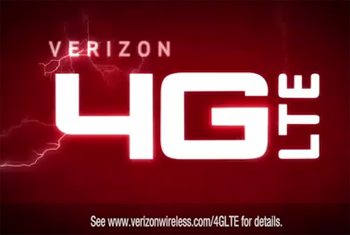Verizon Wireless is reportedly set to expand its “network optimization” program to customers with “unlimited” data plans running across the carrier’s LTE network.
According to a report by Droid Life, Verizon Wireless plans to begin limiting data throughput of customers on unlimited data plans should they meet certain parameters. Those conditions include being in the top 5% of data consumers, which is reportedly somewhere just south of five gigabytes per month; are signed up for an unlimited data plan as opposed to a capped data plan; are no longer under contract; and are attempting to access data services from a cell site deemed to be experiencing high demand.
Verizon Wireless has previously limited data speeds for customers meeting those criteria, but only when accessing services across its legacy 3G network. Verizon Wireless acknowledged that the program was set to begin in October.
“We understand that our customers rely on their smartphones and tablets every day,” noted Mike Haberman, VP of technology for Verizon Wireless, in a statement. “Our network optimization policy provides the best path to ensure a continued great wireless experience for all of our customers on the best and largest wireless network in the U.S.”
According to Verizon Wireless’ explanation of the network optimization practice, “95% of our data customers are not impacted,” the carrier notes on its website. “The top 5% with devices on unlimited data plans may experience managed data speeds when connected to a cell site experiencing high demand after reaching certain data-usage levels in a bill cycle. These high data users will feel the smallest possible impact and only experience reduced data speeds when necessary for us to optimize data network traffic in that area.”
Verizon Wireless did note that the practice will not impact “government or business accounts that have signed a major account agreement.”
The carrier also goes out of its way to explain that the move is not “throttling,” claiming:
“With throttling, your wireless data speed is reduced for your entire cycle, 100% of the time, no matter where you are. Network optimization is based on the theory that all customers should have the best network possible, and if you’re not causing congestion for others, even if you are using a high amount of data, your connection speed should be as good as possible. So, if you’re in the top 5% of data users, your speed is reduced only when you are connected to a cell site experiencing high demand. Once you are no longer connected to a site experiencing high demand, your speed will return to normal. This could mean a matter of seconds or hours, depending on your location and time of day.”
Typically, data throttling is regarded as anytime network speeds are artificially limited by a carrier in order to preserve network integrity. Verizon Wireless indicates that its network intelligence means its move is not “throttling.” The amount of speed degradation is not a set speed, with Verizon Wireless explaining only that those customers subject to the process will receive one-half the network resources as customers not subject to network optimization policies.
The carrier does answer that question by stating that customers that have been deemed by network intelligence as being worthy of being network optimized could see that optimization last for up to two billing cycles, though they will only be impacted when connected to cell sites with high traffic demand.
Verizon Wireless stopped offering unlimited data services in mid-2011, instead offering customers data buckets. Customers that were already signed up for $30 per month, unlimited services were allowed to keep those plans, but new subscribers were limited to capped packages. The one caveat for those looking to keep their unlimited plans was that they could not take advantage of any device subsidy offerings or they would lose the unlimited data.
As part of elimination the option of unlimited data, Verizon Wireless implemented inter-user best effort network optimization technology, which impacted those customers meeting the heavy data-use criteria.
“IUBE capability allows users to be placed into various user categories; each assigned a priority for resource allocation,” the carrier explains. “Verizon Wireless deployed IUBE with two categories. The two inter-user priority categories are specified as: Category 0 and Category 1. Category 0 is for those customers who subscribe to unlimited data plans who are in the top 5% “high usage” customers and are set to receive a smaller proportion of the resource as users in class 1 during periods of high demand within a cell site sector. Category 1 is the default class for typical use.”
Verizon Wireless has since rolled out a number of initiatives looking to entice those unlimited data customers to migrate to one of the carrier’s Share Everything plans, with the latest move appearing to now use software in order to limit network congestion being caused by rogue, unlimited data users.
AT&T Mobility, which led the way in curtailing unlimited data plans, has also run through various initiatives to limit the amount of data being transmitted by legacy unlimited data plan, including throttling of the to 5% of data users and limiting data speeds for all customers once they reach three gigabytes of data used per month.
Bored? Why not follow me on Twitter

Verizon Wireless expands ‘network optimization’ to LTE network
ABOUT AUTHOR
